Clif Kid Organic Chocolate Brownie ZBars test positive for unsafe levels of Lead and Cadmium. See the laboratory report here.
For those new to the Lead Safe Mama website:
Tamara Rubin is a multiple-federal-award-winning independent advocate for childhood Lead poisoning prevention and consumer goods safety, and a documentary filmmaker. She is also a mother of Lead-poisoned children (two of her four sons were acutely Lead-poisoned in 2005).
- Tamara owns and runs Lead Safe Mama, LLC — a unique community collaborative woman-owned small business for childhood Lead poisoning prevention and consumer goods safety.
- Since July of 2022, the work of Lead Safe Mama, LLC has been responsible for five product recalls (FDA and CPSC).
- All test results reported on this website are science-based, accurate, and replicable.
- Please check out our press page to see some amazing coverage of our work so far this year!
Here’s our affiliate link to the test kit Lead Safe Mama, LLC uses for the laboratory food test results we publish: https://amzn.to/3UIPcHP.
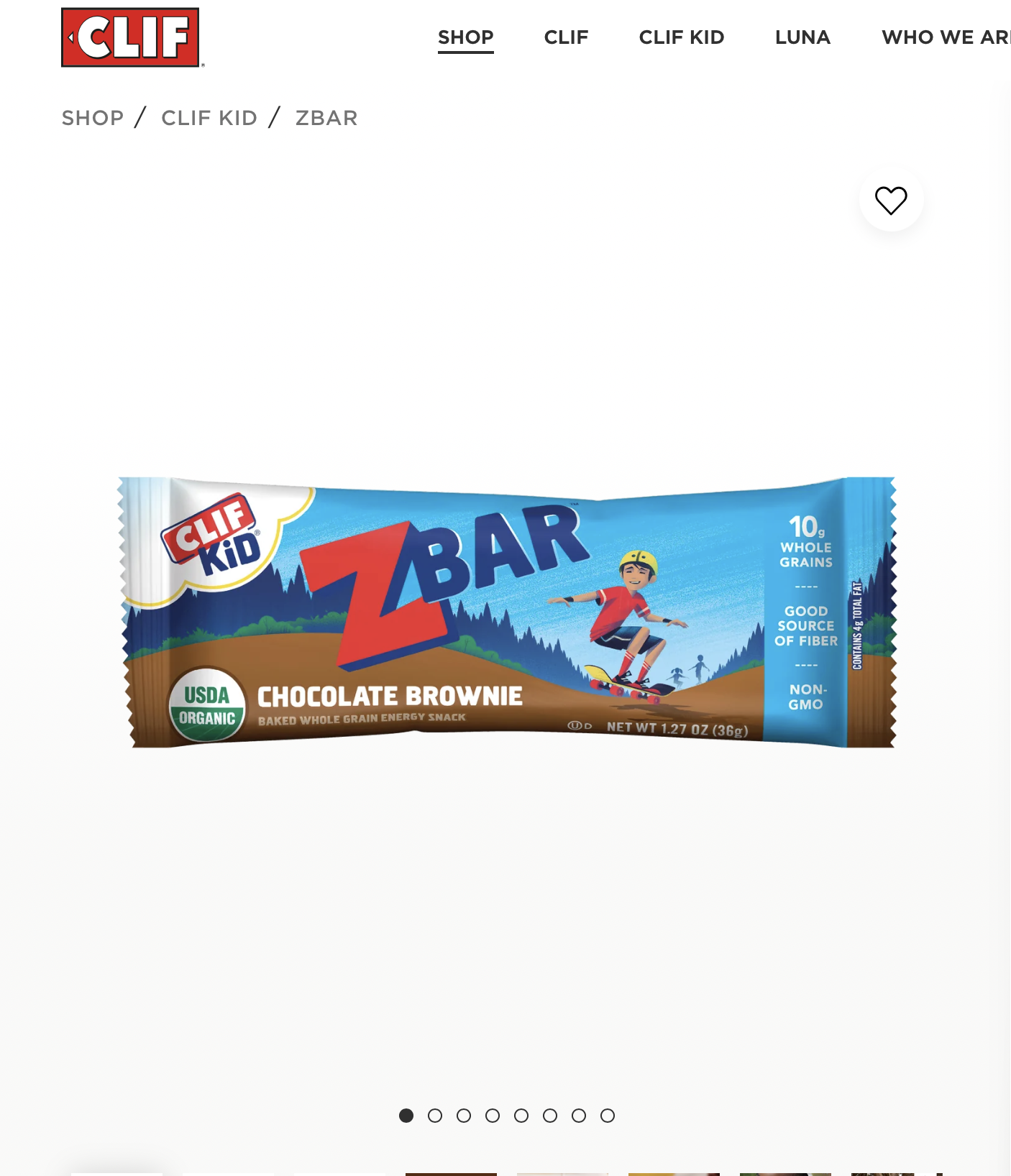
This is an ad-free article.
Advertising and affiliate income help Lead Safe Mama, LLC cover the costs of the work we do here (independent consumer goods testing and childhood Lead-poisoning prevention advocacy). We have removed ads from most of our more widely-read articles (and newly published articles, too — like this one!) to make them easier for you to read. In addition to supporting this work by starting any shopping you might be doing with a click on our affiliate links, if you would like to support the independent consumer goods testing and childhood Lead poisoning prevention advocacy work of Lead Safe Mama, LLC by making a contribution (which will also help us keep our more widely-read articles ad-free), click here. Thank you!
Important Background: What is an Action Level?
Please note the following key points:
The original lab report for this product is below (at the bottom of this page). The graphic above shows the levels of metals detected in this product (in red) along with the low threshold of detection (in green) for each the metals not detected with the laboratory testing that Lead Safe Mama, LLC had completed for this product. The numbers are juxtaposed (in blue) to the “Action Level” proposed by the medical and scientific community in 2021 as part of the Baby Food Safety Act.
- These 2021 levels were proposed as “Action Levels” because they are (in fact) protective of human health.
- An “Action Level” is NOT the same as a “Maximum Allowable Level.”
- Many food manufacturers misinterpret guidance on heavy metals to mean “allowable levels” and consider it reasonable for their products to test positive below these levels.
- This is a (perhaps intentional?) misunderstanding/ misinterpretation the food industry makes — a misunderstanding which food manufacturers use to justify the presence of heavy metals in their products.
- There is no safe level of Lead exposure.
- Lead bioaccumulates in the body.
- Lead bio-mimics Calcium in all biological structures.
- If Lead is present, the human body stores it in Calcium-dense biological structures (the brain, bones, organs, teeth, etc.) in the place of Calcium.
- Nearly all the Lead you have been exposed to in your life is still stored in your body. You can learn more about this by watching our documentary film on childhood Lead poisoning — linked here.
- It is the cumulative impact of heavy metal exposure (over a lifetime) that makes even small/ incidental/ seemingly trivial exposures particularly damaging and dangerous. You can read more about that here.
- Once a food product has the amount of heavy metal (Lead, Cadmium, Mercury, or Arsenic) noted (above) as the “Action Level,” that food product is officially considered (by the scientific and medical community) unsafe for consumption by children as toxicants (found at-or-above these levels) are in the range of heavy metal levels that have been demonstrated to cause lasting harm.
- Action Levels are not related to serving size.
- Action Levels are relevant for any amount of a food product that may be consumed (any quantity of the food in question).
- PPB (parts per billion/ ppb) measurements are a percentage (albeit a very small percentage) and apply to any quantity of the food product tested.
- For more discussion about serving size considerations (and why relying on “serving size” to limit toxicant exposure is not a relevant metric/ not a metric protective of human health) read this article.
- These “Action Levels” proposed in 2021 are the levels at which the scientific and medical community believe the manufacturer (or government) needs to take ACTION to fix the problem.
- One “Action” would be for the manufacturer to take steps to reduce the levels of toxicants in the food product.
- Another “Action” would be for the manufacture to cease sales of the product until the product could be made safe.
- Another “Action” would be for the manufacturer to inform the public that a specific food product has an unsafe level of the metal detected at-or-above the “Action Level” — making a highly-visible public announcement regarding which relevant batches of the product should be recalled/ not consumed.
- The Action Levels proposed with the Baby Food Safety Act of 2021 were not arbitrary toxicant levels, they were proposed because they are the levels most protective of human health, however the Baby Food Safety Act of 2021 was not passed into law.
- Regardless of the fact that the Baby Food Safety Act of 2021 never passed into law — and it is therefore legal to have food for children test positive for Lead, Cadmium, Mercury, and Arsenic at-or-above these levels — these Action Levels still reflect the current (modern/ relevant) advice of the medical and scientific communities as levels both achievable by the industry and safeguards of infant and toddler health.
- Food industry lobbyists fought back against formalizing these proposed “Action Levels” as a government standard, alleging they were unachievable.
- The image below (with the number FIVE) links to a landing page with FIVE food products we have already tested this year (2024), all of which have been “non-detect” for toxicants with low thresholds of detection (for Lead, Mercury, Cadmium, and Arsenic) far below the 2021 proposed Action Levels.
- These FIVE food products (about 10% of the foods Lead Safe Mama, LLC has tested and reported on so far since March of 2024, when we started laboratory testing foods) clearly demonstrate these Action Levels as achievable across a range of food types (salt, flour, coffee, oatmeal, and chia seeds — plus we are about to add two beverages to that list this month to bring the list to seven “non-detect” foods).
- The legitimacy of these levels as “Action Levels”/ “Levels of Concern” (even though they were not adopted as law) is further supported as the situation is quite similar to the legitimacy of the America Academy of Pediatrics’ level of concern for Lead in water — which is 1 ppb — even though the FDA’s official “level of concern” for Lead in water is 15 ppb (you can read more about that here).
For safer food choices, click here.
Published: August 11, 2024
A full lab report for the product pictured is below.
Please scroll down.
NOTE: This is a really long article! “Why is this such a long article,” you ask? Answer: When we are calling companies out on the contamination of their products (especially food products), we want to make sure we cover all of the bases so these product manufacturers cannot successfully sue us (for publishing replicable science that demonstrates their product is unsafe).
Lead Safe Mama, LLC sent Cliff Kids Organic ZBars in Chocolate Brownie flavor to a laboratory for testing and found this food product to test positive for unsafe levels of both Lead and Cadmium. This finding is typical for most of the chocolate base ingredients (cocoa powder/ cacao powder) and chocolate-flavored products (chocolate-flavored candies, food bars, and cereals) we have sent to the laboratory for testing to date. You can check out the lab reports for some of the other chocolate and chocolate-flavored products we have tested in the six links below:
- Envirokidz Koala Crisp chocolate-flavored cereal
- Seven Sundays Chocolate Flavored Sunflower cereal
- Simple Mills Seed & Nut Flower Sweet Thins in mint chocolate flavor
- M&M’s Milk Chocolate Candies
- Unreal Milk Chocolate Gems
- Unreal Dark Chocolate Coconut Bars
- In the above graphic showing the levels of Lead and Cadmium detected in this product, we are comparing the level detected with the health-protective standards proposed by the medical and scientific community in 2021 (the “Action Levels” noted above).
- The levels of both Lead and Cadmium we found in this food product are not illegal because the presence of Lead and Cadmium in food intended for consumption by children is not currently officially limited or regulated by the FDA (as of publishing of this article on August 11, 2024).
- In January of 2023, the FDA issued a “Draft Guidance” regarding the presence of metals in foods that may be consumed by children.
- The “guidance” is primarily focused on Lead contamination of specific categories of foods children may eat.
- The levels in the draft guidance are not protective of human health and have been suggested as compromise (in favor of the processed food industry) in response to the food industry’s lack of willingness to comply with health protective proposed 2021 Action Levels.
- These more recent “guidance” levels also do not come in the form of enacted or enforceable legislation — so food manufacturers are actually not required to adhere to them.
- Here’s a link to the January 2023 Draft FDA “guidance” initiative.
A common question in response to the lab reports for food testing we have been publishing: “What about Prop 65 Compliance? The company (any company, in response to this testing) says they are ‘Prop 65 compliant!‘“
Prop 65 considerations are not relevant (even though they are often referenced by food manufacturers attempting to justify the presence of toxicants in their food products), as Prop 65 limits are based on “serving sizes.”
- All federal agencies agree there is no safe level of Lead exposure for humans.
- The concern for impacts of Lead exposure is even greater for younger children, as their brains are developing rapidly so they are therefore more susceptible to the long-term neurocognitive impacts from Lead exposure. Learn more about this in our documentary film.
- Even if there were an “acceptable” amount of a carcinogen (or neurotoxin) to have present in a food intended for consumption by children, “serving sizes” set by food manufacturers are typically unrealistically low (compared to how much of the product a child might actually eat in one sitting) and so are not relevant when considering actual exposure risks presented by certain foods. This is especially true for serving sizes in the candy industry (across the board).
- You can read more about that at this link.
Cadmium is a known carcinogen that has been on the official list of known carcinogens for more than three decades now. Cadmium does not belong in our food and especially does not belong in food intended for (and marketed to) children.
Which specific ingredients are responsible for the Cadmium-contamination of this product?
With the independent (third-party) laboratory testing Lead Safe Mama, LLC has completed since March of 2024, we have been consistently finding unsafe levels of both Lead and Cadmium in nearly all processed foods that have a chocolate base or are chocolate/ natural cocoa-“flavored.” With one notable exception (conventional M&M’s — linked here — tested “non-detect” for Cadmium) this has been true both for products with an “organic” (or “all natural”) designation for ingredients and for products without an organic (“all natural”) designation. As this is a chocolate-flavored food bar (with ingredients including “cocoa” and “unsweetened chocolate”), the fact that we found Cadmium with the independent laboratory testing we conducted for this product was not unexpected.
We have also been finding high/ unsafe levels of Cadmium in ground flour products (organic and non-organic) and in products with Sunflower oil. Given these chocolate brownie-flavored food bars also have these additional two suspect ingredients (“sunflower and/or soybean oil” and “oat flour” — see image above), the fact that the Cadmium levels in this product are significantly higher than some of the other chocolate-flavored products we have tested recently is also not surprising.
What is the source of this Cadmium contamination?
With the sunflower oil consideration (and possibly also with cocoa products) there are concerns that the Cadmium contamination may be introduced via crop fertilizers that are contaminated with Cadmium. Given this is an organic food product, that theory seems less likely in this case (although not impossible). The other theory we have shared revolves around Cadmium-contamination possibly introduced by the processing machinery for formed (shaped) processed food products like these bars.
The comparison between the toxicant profiles of the “conventional” chocolate M&M’s we reported on earlier (here’s a link to lab report) and some of the other “natural”/ “alternative”/ “healthier” chocolate-flavored products we have tested (like these Zbars) emphasizes that the Action Levels proposed in 2021 (in this case creating a processed food product with “less than 5 ppb Cadmium”) ARE achievable by the food processing industry. This data point also appears to indicate that Cadmium-contamination of cocoa products is fundamentally not an insurmountable problem (as there was no detectable Cadmium found in the M&M’s).
Our hypothesis at this moment (with the information that we have available to us) is that the manufacturing plant making M&M’s is a larger factory with better, cleaner, more modern/ sophisticated (all stainless steel?) equipment — and therefore may not have Cadmium-contaminated food processing machine components. Conversely, the manufacturing plant making smaller batch (“organic” and “natural”) food products — like these Z-bars — may have less sophisticated (smaller scale) processing machinery with Cadmium-plated components.
Cadmium surface plating on machine components often wears off with use (over time) and those machine components with worn coatings need to be replaced once the coating has worn. If those components are part of a food processing machine it is not unlikely for the worn coatings to wear off (at the microparticulate level) into the food being processed with these machines.
It is Lead Safe Mama, LLC’s position that this potential (hypothetical) source of Cadmium-contamination of foods (all types of processed foods) is likely a primary overlooked source by others examining these concerns. In our work testing machinery components (for machines used across different industries) using XRF technology, we often find Cadmium-plated machining components (which supports this hypothesis).
We would like to encourage any food manufacturer whose finished food products test positive for Cadmium to start looking for sources of Cadmium contamination by first examining their food-contact equipment components using XRF technology. If any Cadmium-plated food-contact components are identified (and if those components can be easily replaced with unplated stainless steel alternative components, it seems possible (and reasonable) that the problem of significant Cadmium-contamination in these processed foods could possibly be resolved fairly quickly. Again, this is just a hypothesis, but we strongly believe it is one worth investigating.
The rise in cancer in younger people is perhaps not so surprising given the presence of Lead and Cadmium in so many popular packaged foods.
Recent news coverage indicating an increase in cancers with younger generations has emphasized that our younger generations’ reliance on ultra processed foods is a likely significant contributing factor to the trend.
Given so many processed foods also test positive for unsafe levels of both Lead and Cadmium (from various sources, including ingredient contamination and processing contamination), the role of processed food in the current cancer epidemic is possibly even more significant than researchers have estimated.
One recent study noted that “Seventy-three percent of the food on the grocery store shelves in America is ultra-processed” food (source). What a lot of consumers do not understand is that ultra-processed foods can also include foods with the “organic” (or “all natural”) label. Just because something is organic (or “all natural”) does not mean it is not ultra-processed. (See more info here.)
- To see a full list of all of the foods we have tested and reported on (and the related articles we have written) since we started doing food testing for Lead, Cadmium, Arsenic, and Mercury, click here.
- To see a full list of all the foods we have pending/ currently at the lab (and all of the items we are seeking community funding for future testing and reporting on), click here.
- For safer snack choices for your children, click here.
- For general guidelines on avoiding Lead (and other toxicants) in your diet, click here.
- For a comprehensive discussion of the concerns for Lead in baby food, click here.
- For a list of products we have tested that tested negative (non-detect) for Lead, Cadmium, Mercury, and Arsenic, click here.
A few more key background points:
- Lead Safe Mama, LLC is a unique community collaborative woman-owned small business in which YOU (Our community: Readers of this website and followers of our social media channels) decide what we test and you (our community) help cover the cost of that testing.
- The testing we report on is truly independent third-party testing — community-driven and community-funded — not influenced by any agency, person, or business.
- We are sharing this scientific information (laboratory test results for food products that the Lead Safe Mama community has asked us to test, and that the Lead Safe Mama community has funded testing for) with you (Lead Safe Mama readers) to help you make informed decisions for your family.
- We are not doing this to cause panic, fear, or anxiety.
- Most other organizations and businesses completing food testing are not sharing the actual lab test results for the food products they are testing.
- We have chosen to “lift the veil of mystery” and share the actual lab reports so you have hard data to use as a basis for any decision-making you need to do.
- We are not interpreting this data for you or “rating” or “scoring” these products comparatively (against other similar products) – as many other agencies are.
- We believe these ratings systems are misleading (at best) and give consumers a false sense of security about potentially consuming toxic products (just because certain products may be less toxic than other similar product – not because those products are inherently safer choices as foods).
- We are confident you are smart enough to understand what the numbers mean (to take the time to learn what they mean) and use this as a basis to make informed decisions for your family.
- While none of us can change the past, we can at least hopefully take the time to learn about the toxicant profiles of the foods we feed our families and use that information to make the best choices we can moving forward.
- #KnowBetterDoBetter
The most important question to ask yourself right now…
If you had known that this product tested positive for unsafe levels of both Lead and Cadmium, would you have chosen it for your family? For me the answer to this question is a resounding “no!” I will no longer be purchasing products from this brand for my family. I have personally purchased dozens of boxes of this exact product over the years. This was one of Charlie’s (my youngest son) favorite on-the-go snack foods and this will not be an easy transition for my him. Especially given the impacts from Lead exposure that so significantly influence our daily life (Charlie has fairly significant disabilities from being Lead poisoned in utero and again later as a toddler by Lead dust in our home), protecting him from completely unnecessary and 100% avoidable exposure to Lead and Cadmium in his diet is a simple and manageable goal.
We understand that others may choose to use this information to make different choices for their family based on their own standards and/or circumstances — and we think no one should be judged or criticized for making whatever choices seem right for them.
Hopefully the information we provide will help you make whatever choices you make with a foundation of knowledge and facts (rather than selecting products based on blind acceptance of the marketing hype and spin found in the greenwashed language and manufacturer’s claims).
The test results for this food product support the following considerations:
- As a society, we really need to reconsider how and what we are feeding our children.
- At minimum, as parents, we need to consider eliminating (at least significantly so) highly-processed (made by machines) snacks based from any kind of processed flour (including seed and nut flours).
- Note: In our testing to date, processed packaged food products made of flour (any type of flour) appear to be more contaminated than some other products — likely both as a result of contamination introduced by the mechanized grinding and processing of the ingredients used to make the flours in addition to contamination likely introduced during the machining process required to make the final shaped/ formed product (cereal O’s, puffs, or cookies, etc).
- These machine-formed foods tend to often test positive for unsafe levels of Cadmium (supporting our hypothesis about machine-introduced Cadmium contamination).
- We also need to consider limiting/ eliminating ANY TYPE of store-bought processed, packaged snacks from our children’s diets whenever possible (not just the flour-based products).
- Given the current state of chocolate contamination across the board we also should seriously consider significantly limiting consumption of any products that are made primarily of chocolate/ cocoa powder, etc.
- Societally, we need to more closely examine how our culture of eating processed, packaged food (which frequently tests positive for high levels of known carcinogens, like Cadmium and Lead) is impacting cancer rates, types, and what we can do in response to these findings.
- The epidemic of cancer in the United States is not generated by some mysterious source — we are accumulating ample evidence that it is clearly rooted in widespread contamination of our food supply (contamination which is primarily found in processed, packaged foods).
- We need to demand more from our food supply chain (every step of the way: Not just growing, but the entire system, including harvesting, processing, packaging, and distribution).
- We need to demand that profit-driven corporate interests (no matter how large or small the corporation) stop manufacturing and selling contaminated products — especially food products with contaminants like Lead and Cadmium, two toxicants that are well-established as causally linked to countless life-long health impairments (and are also toxicants that accumulate in the body over a lifetime).
- As consumers, we need to demand (and advocate for) effective regulatory oversight of the food industry.
- Finally, we need to demand greater accountability and higher standards related to the language used for marketing and selling products — especially products ostensibly being sold as “healthier” and/or “more natural” choices for children.
I have been feeding this product to my kids — what should we do now!?
If you have been feeding any Clif Kids brand Zbar products to your young children (or consuming them yourself) on a regular basis (not just the chocolate flavored ones), out of an abundance of caution we recommend that you stop doing so immediately and consider getting a full heavy metals panel — including getting testing for Lead and Cadmium (to help determine if your children or you have had any exposure of concern from eating these food products).
We will test a non-chocolate flavor of this Z-bar product soon, so we have a basis for comparison that may shed some light on the source of Cadmium contamination. If the Cadmium contamination of this product is all from the Sunflower oil and/or the processing equipment (and not from the chocolate), we can expect the levels of a non-chocolate version of this product to be similar to the levels reported here for the chocolate brownie flavor of this product. If it is more from the chocolate (and less from the other possible sources) we can expect other non-chocolate flavors of these bars to have lower levels of Lead and Cadmium.
As always, we encourage you to rely on science to help you make informed decisions for your family.
- Ask your doctor about getting tested for metals.
- Having baseline heavy metals testing performed for everyone in your family is a good place to start.
- Heavy metals panels can be done with a urine, blood, or hair testing.
- We discuss considerations related to heavy metal panels with urine testing and hair testing at this link.
Hopefully you and your children will all test negative for Lead and Cadmium after regularly consuming a product like this, but it is better to get a test done and know the answer (to have a baseline for future comparative testing) than to not test at all.
If you or your children do test positive for heavy metals, you can then use that information to make informed decisions by choosing which products to avoid (based on the lab testing we have been sharing – combined with other sources of scientific data that are available regarding food toxicity), and which foods to emphasize instead (as replacement choices) in your children’s diets.
Finally: If you must consume “chocolate” products (or if you need help weaning yourself off of a chocolate addiction), consider switching to homemade chocolate-“flavored” foods (like chocolate cake or chocolate ice cream) where the amount of chocolate in the food product is comparatively low (as a ratio to other likely less-contaminated ingredients — like eggs, flour, milk, butter, etc.) and therefore the related Cadmium or Lead contamination of the food should also be lower.
Chocolate should always be treated like a flavoring and not a food (like vanilla or cinnamon) and used sparingly — if at all.
If you are seeing a medical provider who has recommended daily consumption of chocolate (especially of dark chocolate), please share this article and our film with them. If they still support their recommendation after further inquiry into the science behind chocolate contamination (more on that here — an article we originally published in 2013 on chocolate contamination), you may want to consider finding a new healthcare practitioner who is aware of the most recent science related to this issue.
Some additional reading & links that may be of interest:
- This is the Lead Safe Mama affiliate link to purchase the test kits we used for this testing.
- This page has a full spreadsheet listing of all of the food testing we have completed and that we have in-progress.
- Here’s our landing page with links to all the results for food products we have tested.
- Here’s how to send your own food samples into a lab for testing (the cost is $195 per single food sample tested for Lead, Cadmium, Mercury, and Arsenic) or how to collaborate with Lead Safe Mama, LLC on the food testing we’re hosting.
- Check out the Food category of articles here on Lead Safe Mama dot com.
Amazon links are affiliate links. If you purchase something after clicking a Lead Safe Mama, LLC Amazon affiliate link, we may receive a percentage of what you spend at no extra cost to you.
Images from the Clif Bar website page for this product as of August 11, 2024:
The website that comes up when you click the “Smart Snack Compliant” hyperlinked text in the image above:

Never Miss an Important Article Again!
Join our Email List





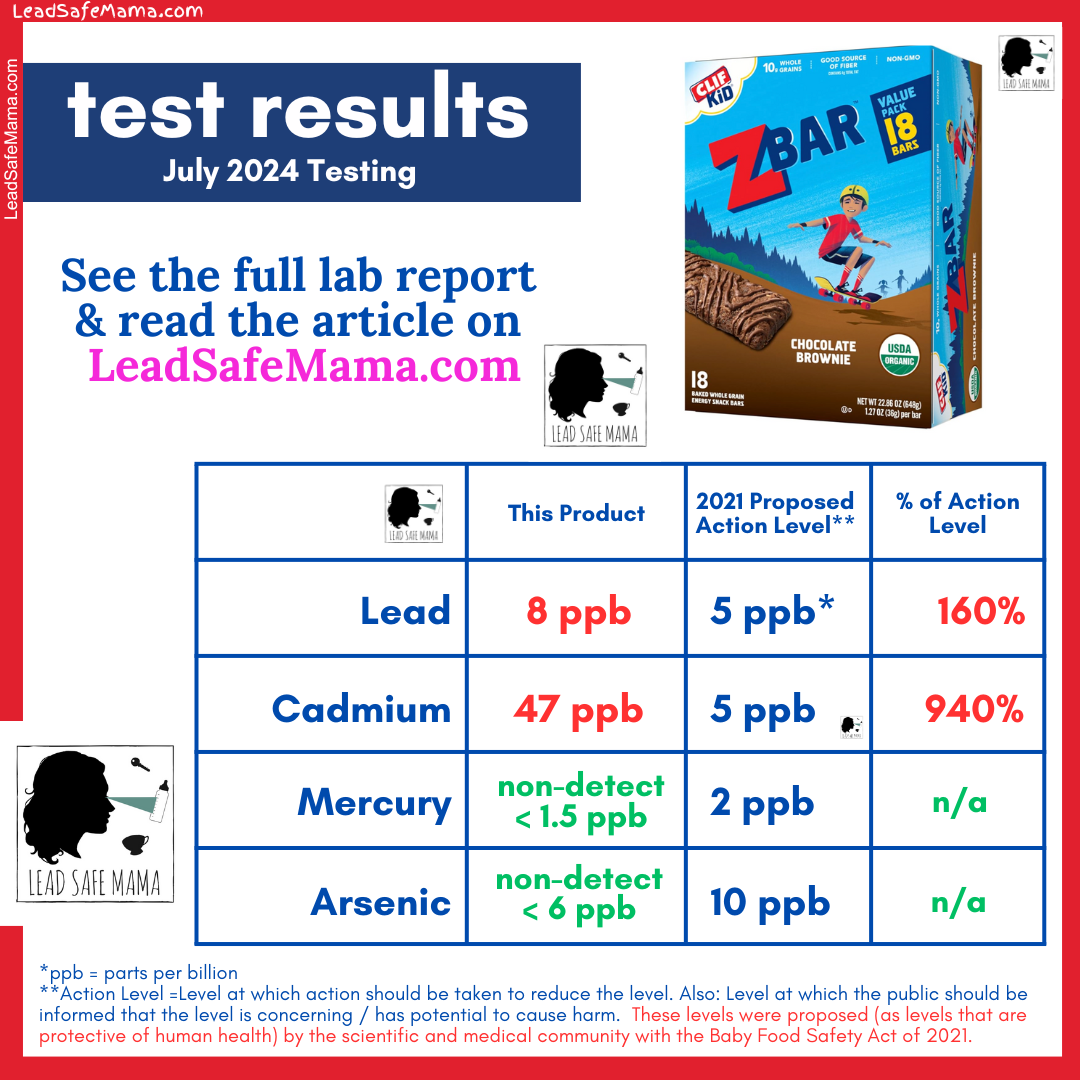
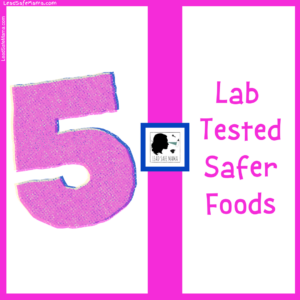
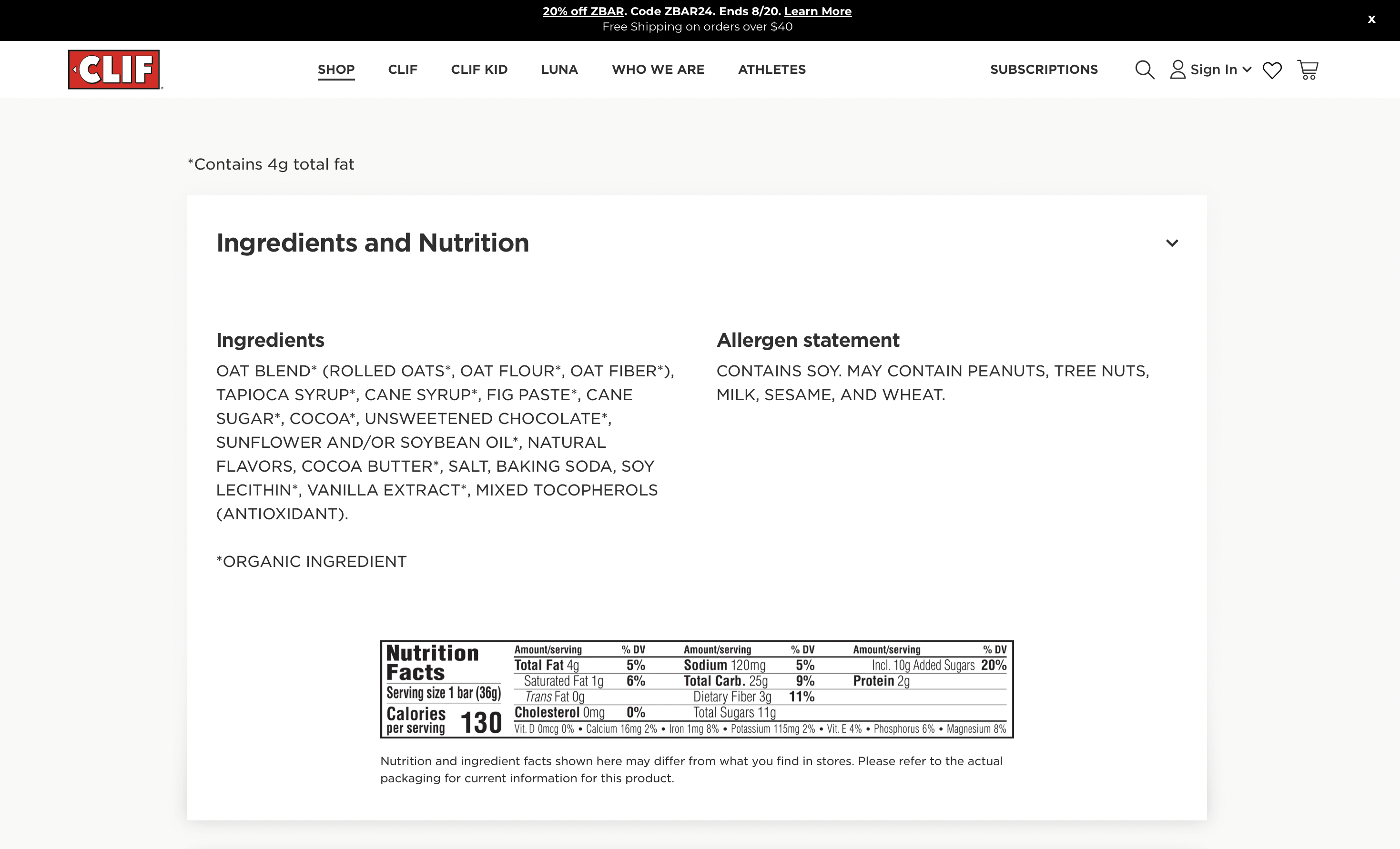
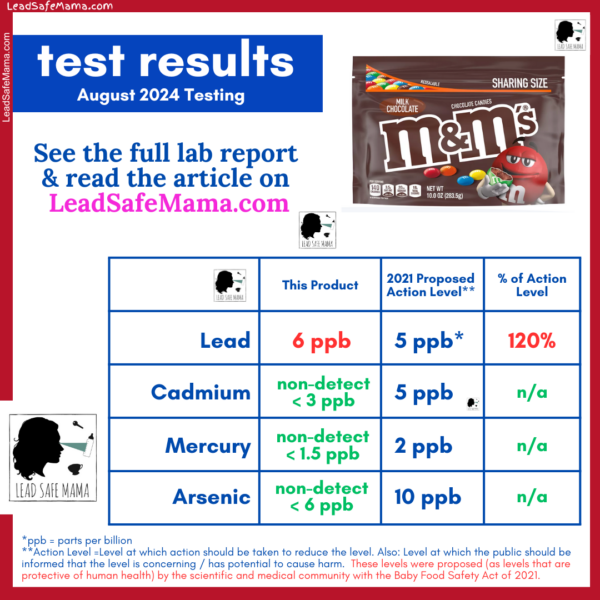
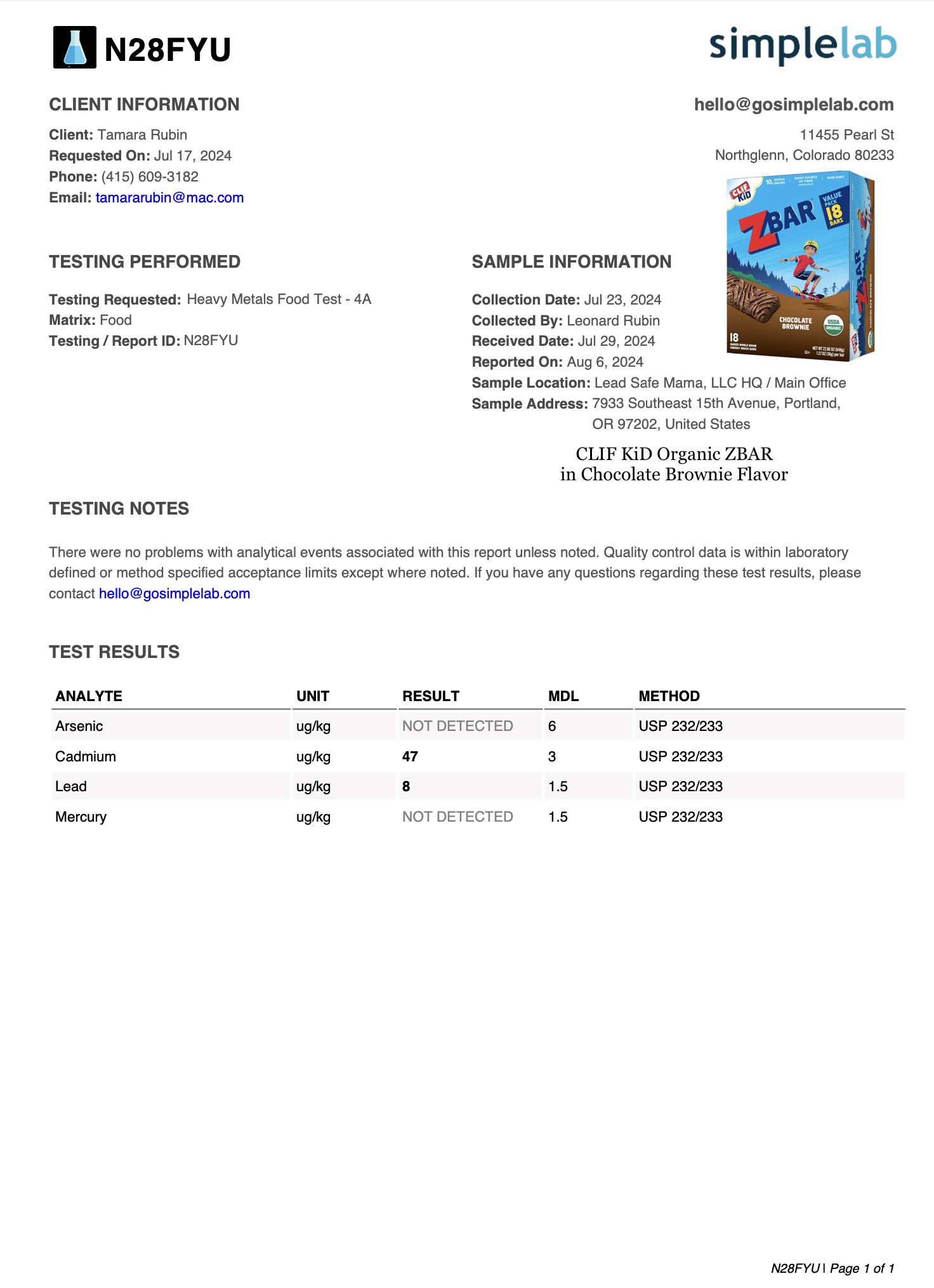
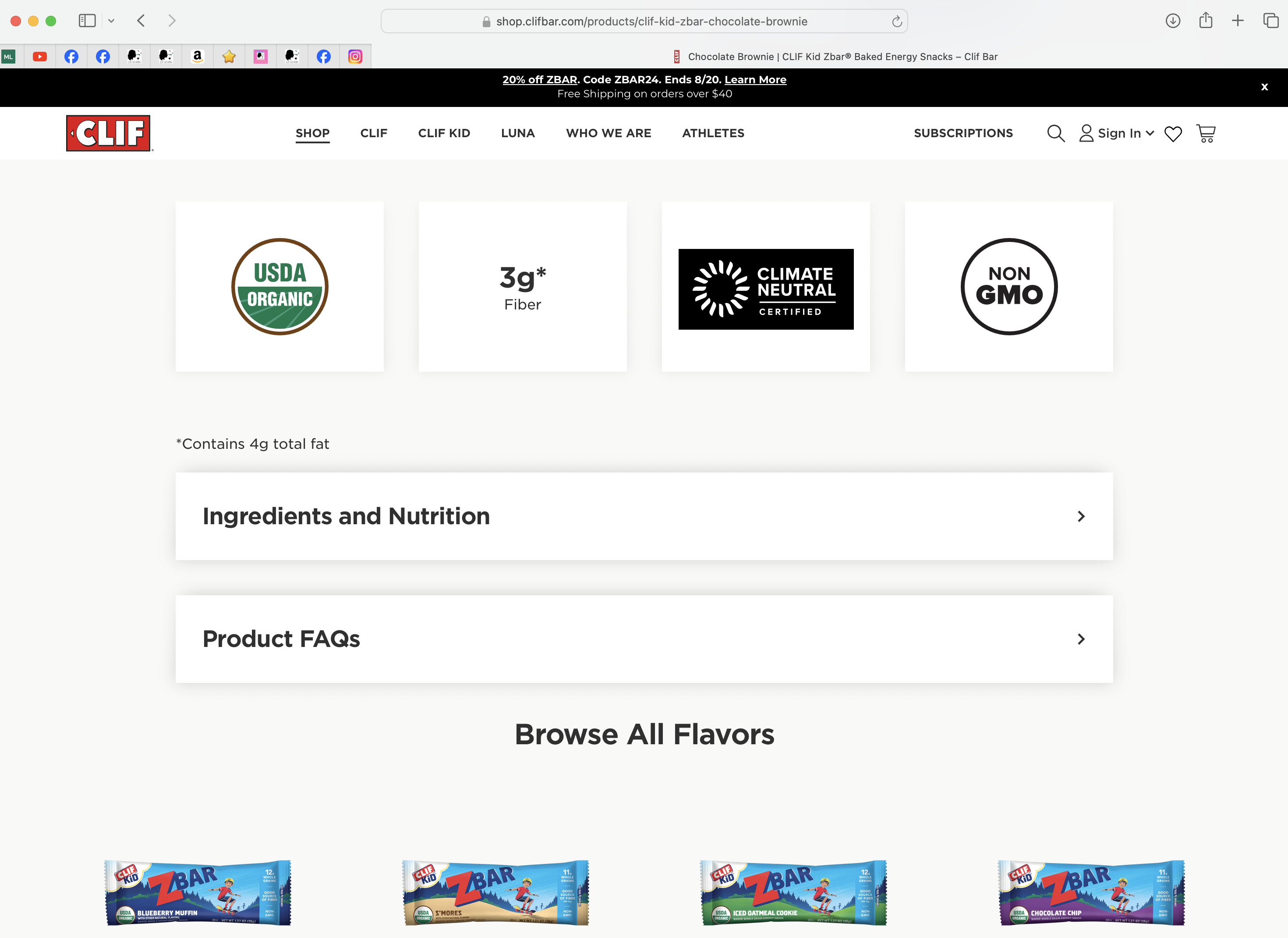
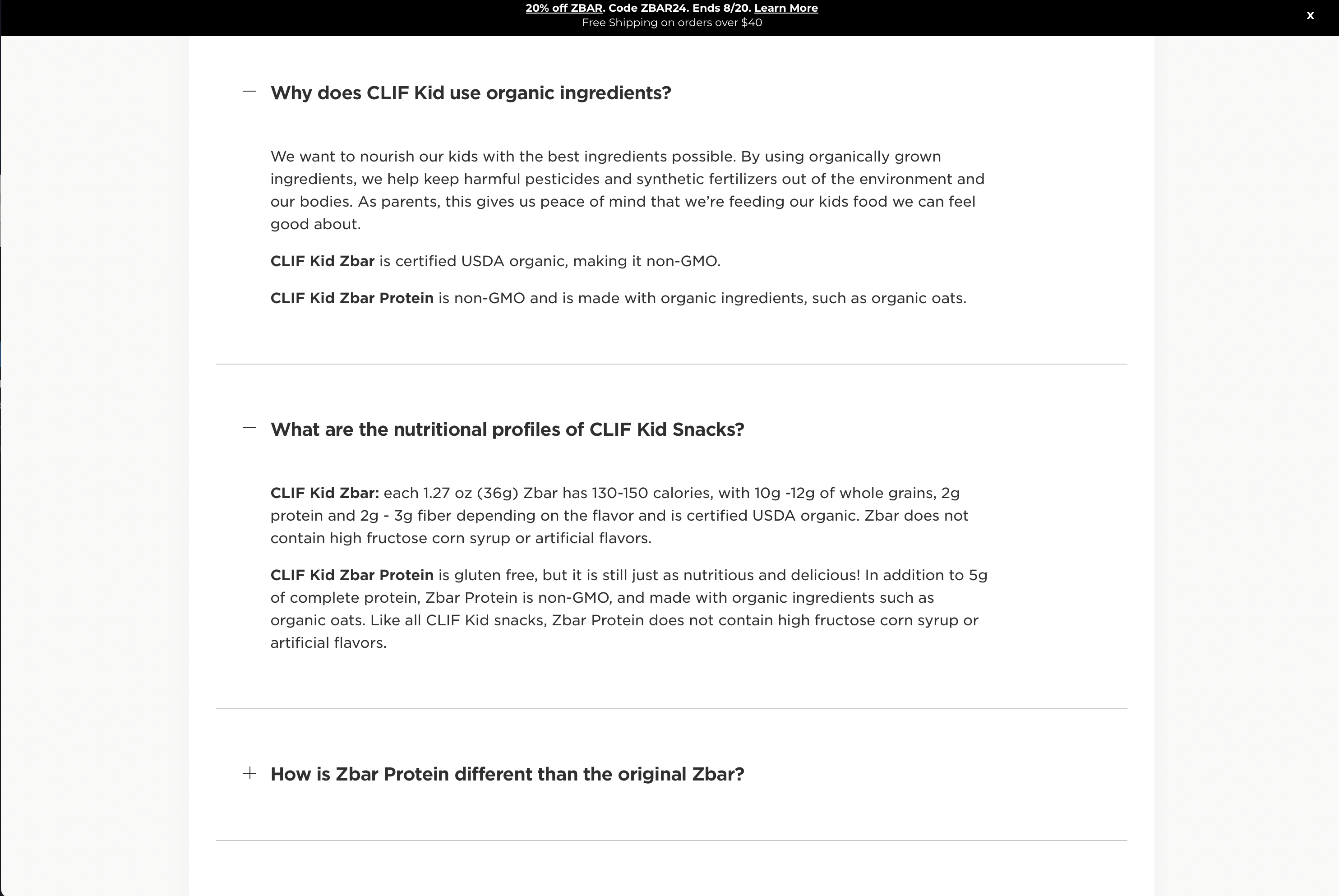
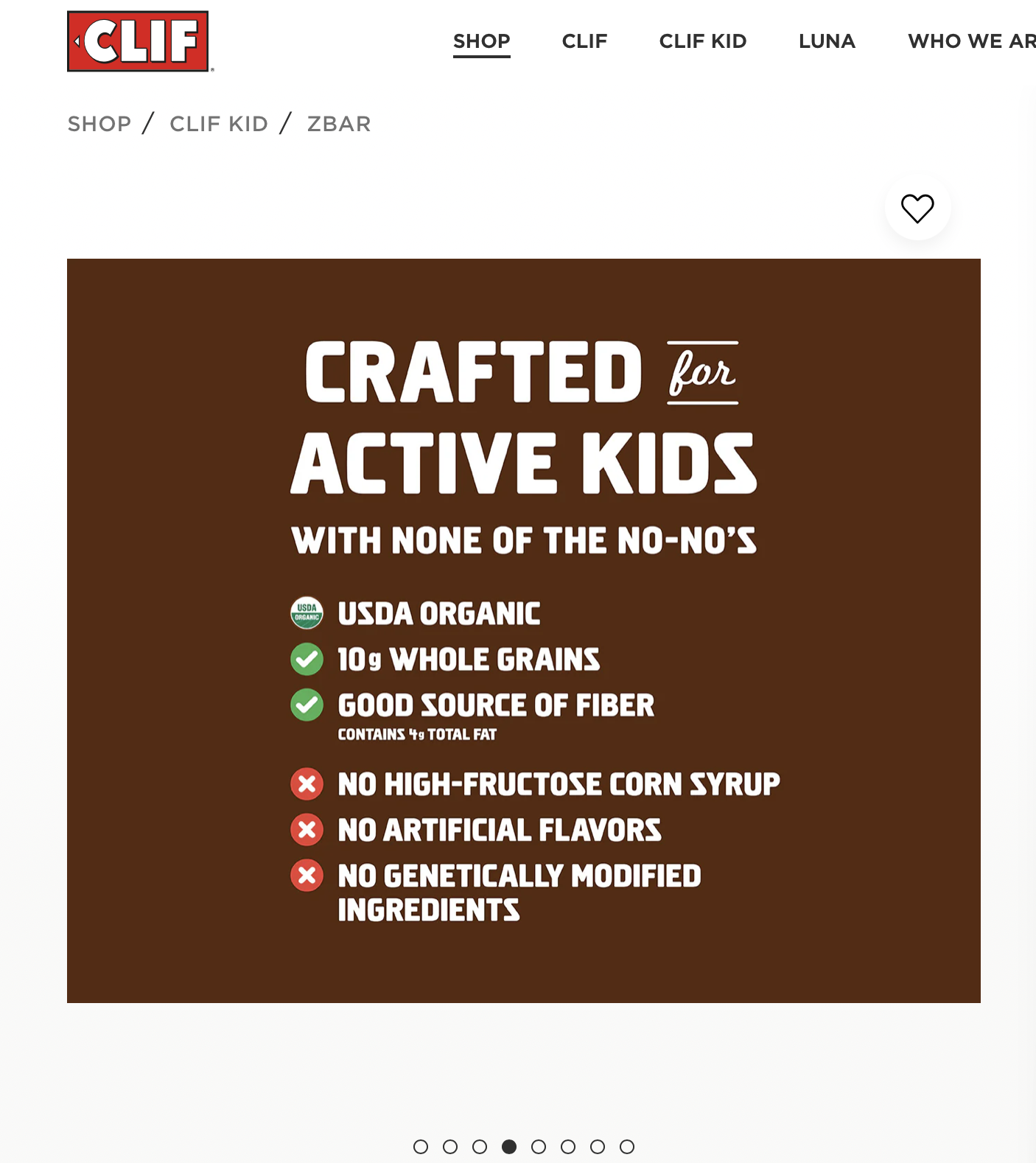
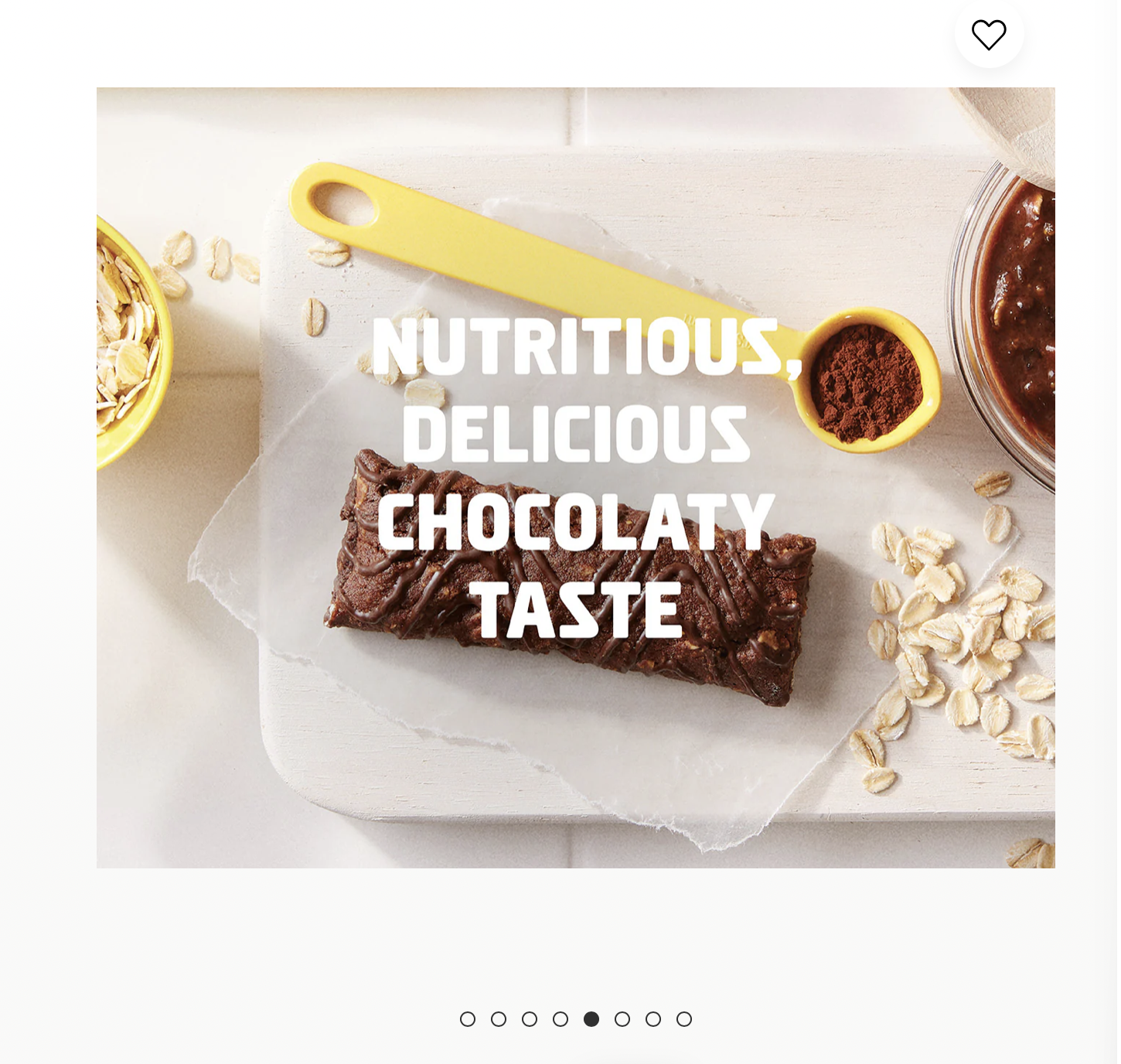
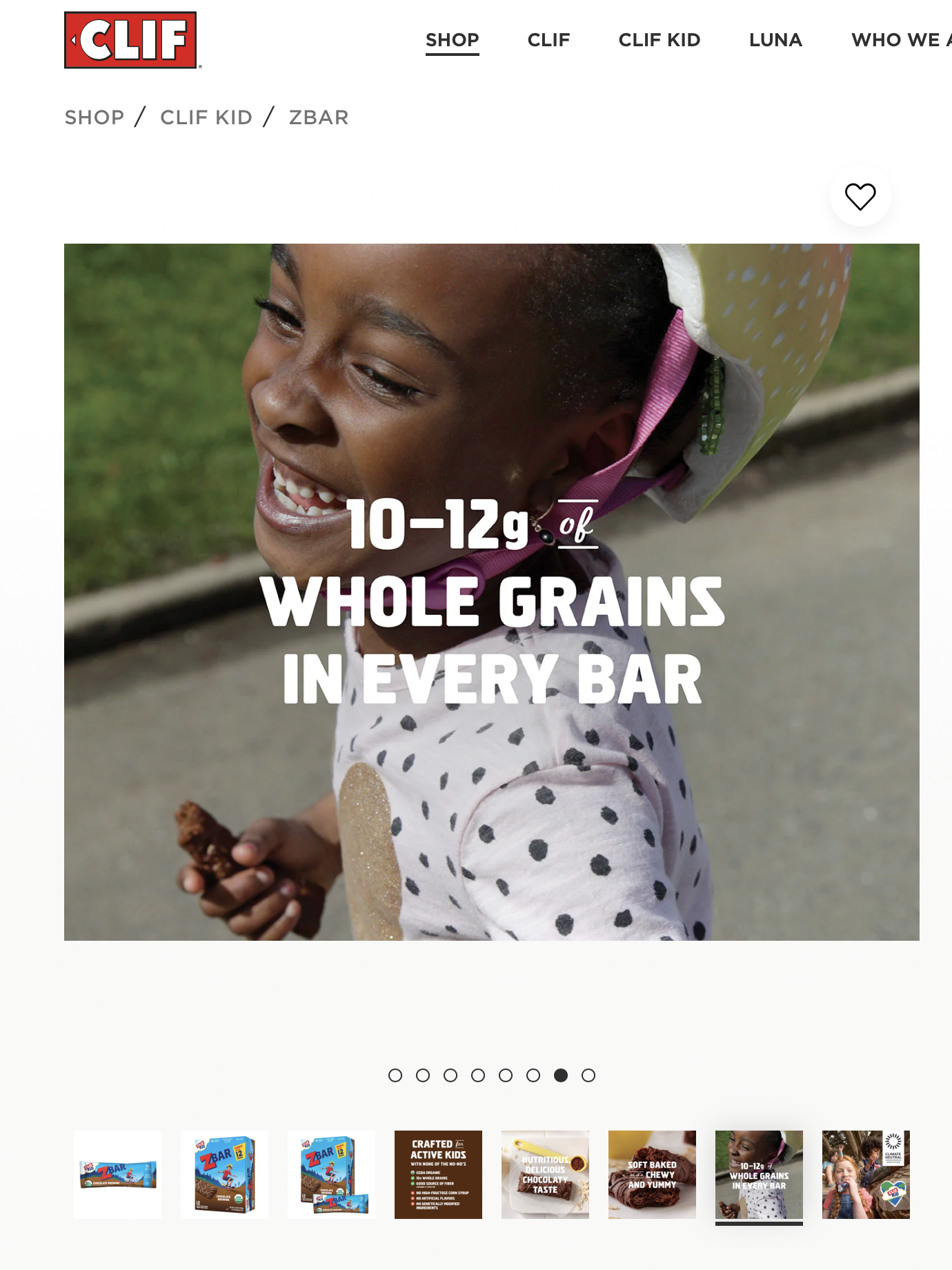
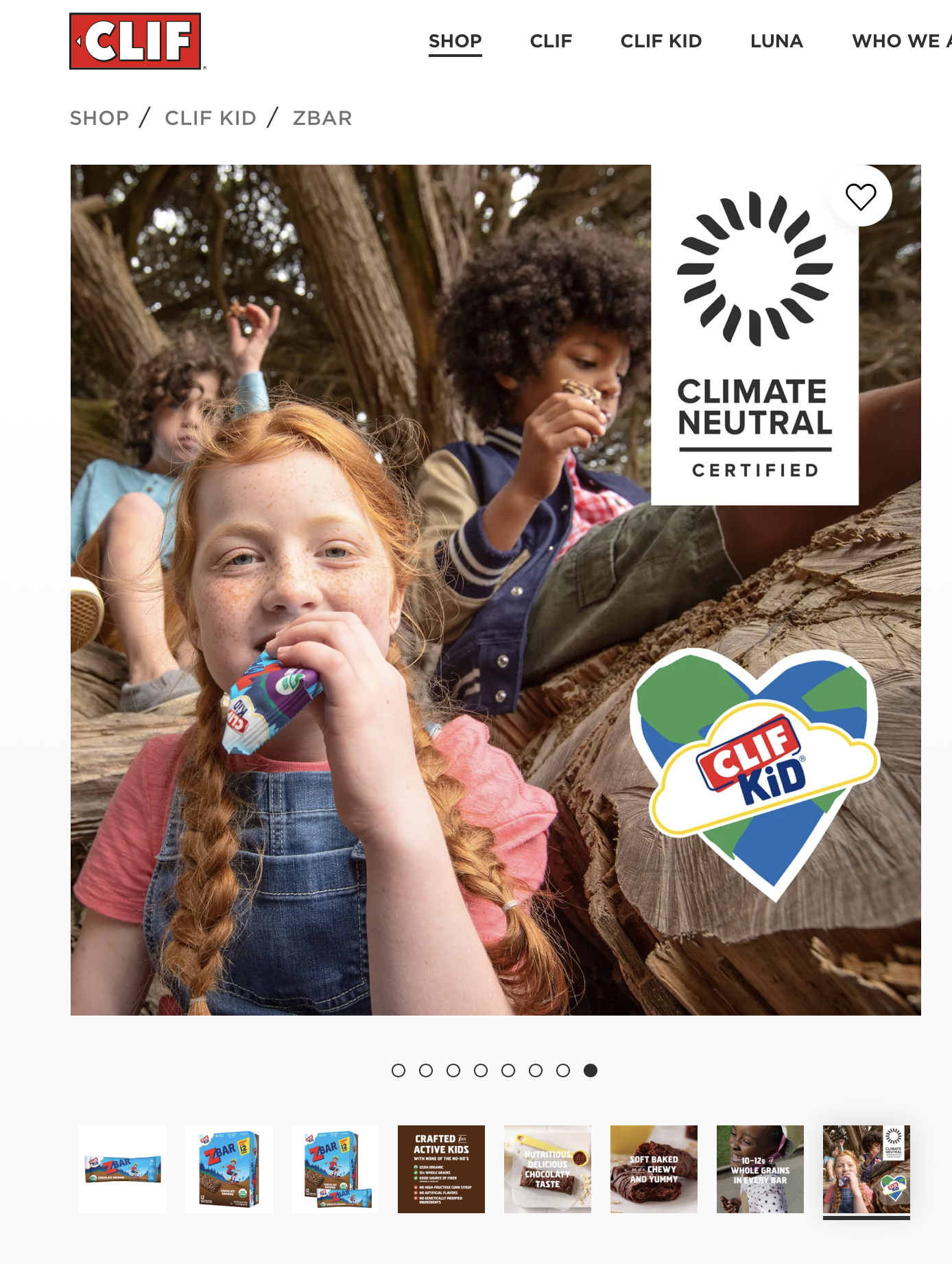
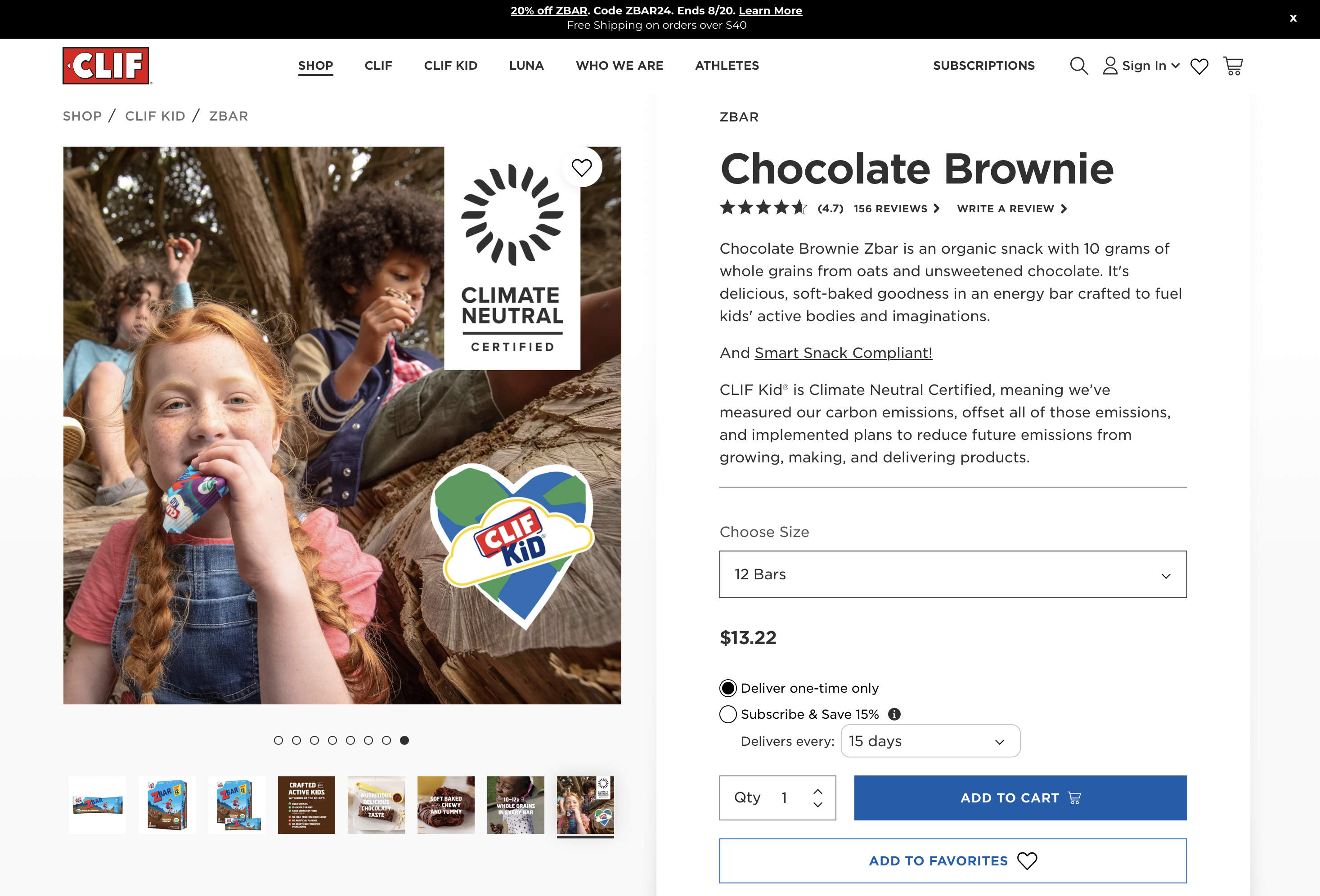
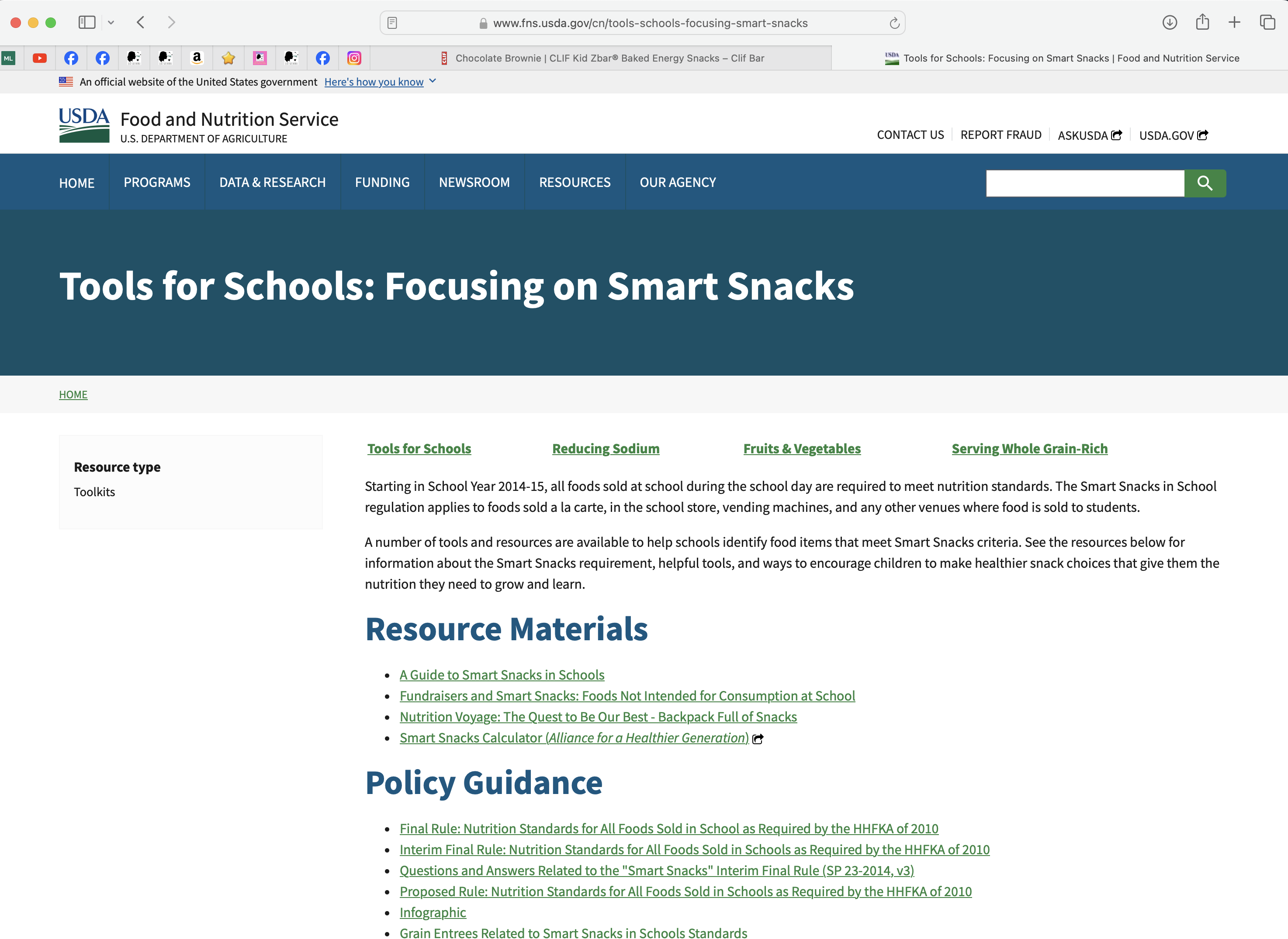
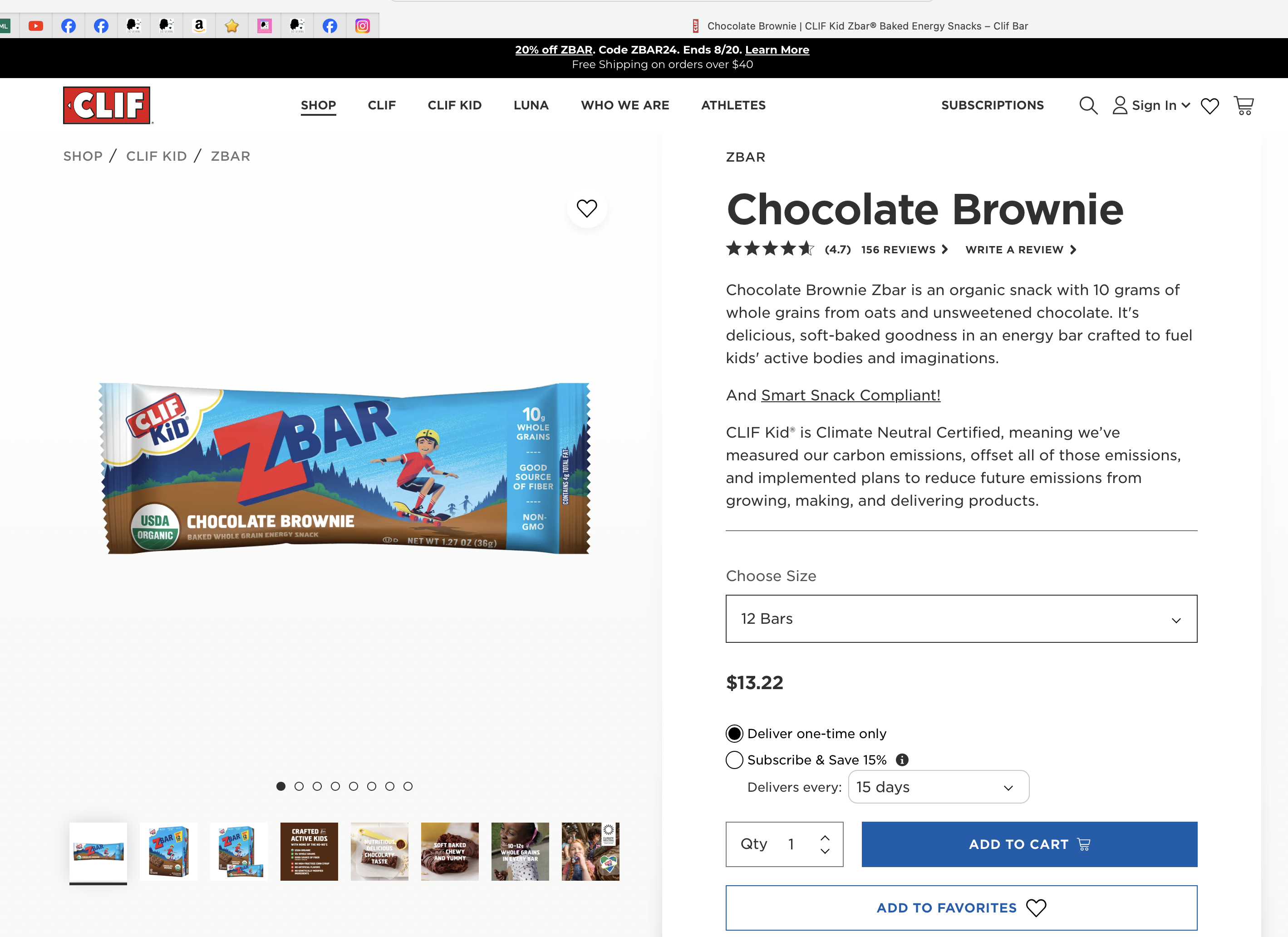

I just sent this message to clif —
Hello — I am a long time Clif customer for more than 20 years, Luna and Clif Organic stuffed bars myself, and Z-bars for my kids! I was so saddened to hear about the recent independent lab testing conducted by the activist Lead Safe Mama, showing Chocolate Clif Kids Z-bars to contain an unsafe amount of lead and cadmium. Her hypothesis is that the cadmium might be occurring due to cadmium plating at the factory — I am writing to urge your company to please thoroughly investigate how to reduce and eliminate these sources of carcinogenic and neurotoxic exposure in all your products, but especially your children’s products! It is NOT inevitable for these heavy metal exposures to occur, as is shown by her other lab testing — including M&Ms with non-detect cadmium, and Joviel flour and One Degree oats non-detect for all heavy metals. The amount of lead occurring in your product is actually comparatively low, looking at other chocolate based products (cocoa being a common source of lead contamination) — perhaps simply reducing the amount of cocoa used in the Z-bars recipe would bring your product into safer levels.
Thank you so much for your time and consideration! I know that the health and safety of your consumers (particularly the tiny ones!) is important to you, and I am hopeful that Clif will step forward as a leader in the industry in transparently addressing these concerns.
Can we add one of the non-chocolate Clif Kids bars to the list for testing?? Oatmeal cookie please, for comparison?
Thank you.
I think it’s also very possible that a significant portion of the Cadmium contamination with this product may be coming from the Sunflower seed oil.
I’d love to see them find a Cadmium-free oil for their products!
The source of Cadmium in the sunflower seed oil could be from machining or from fertilizers / pesticides.
T